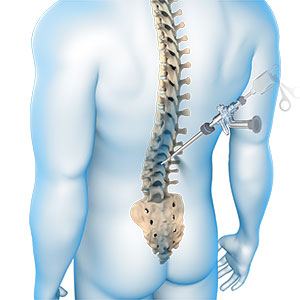A disc bulge is a common condition affecting the spine that occurs when one of the intervertebral discs—the soft, gel-like cushions located between the vertebrae—protrudes beyond its normal boundary. These discs act as shock absorbers for the spine, allowing it to move flexibly while protecting the vertebrae from impact. At Manipal Hospital Kharadi Pune, medical experts regularly diagnose and treat patients with disc bulges using advanced diagnostic tools and personalized treatment approaches.
How Disc Bulges Occur
As we age, the spinal discs undergo natural wear and tear, losing some of their water content, which makes them less flexible and more prone to damage. A bulging disc occurs when the outer layer of the disc (the annulus fibrosus) weakens, and the disc’s soft center (the nucleus pulposus) starts to push outward, forming a bulge. Unlike a herniated disc, where the inner material breaks through the outer layer, a disc bulge is less severe but can still cause significant discomfort.
Disc bulges are most common in the lumbar spine (lower back) and cervical spine (neck), though they can occur anywhere along the spine.
Symptoms of a Disc Bulge
A bulging disc may not always cause symptoms, especially if the bulge doesn’t compress a nerve. However, when nerves are affected, individuals can experience:
- Back or neck pain: This is the most common symptom, often aggravated by movements like bending or lifting.
- Numbness or tingling: If the bulging disc presses on a nerve, you may feel these sensations in your arms, hands, legs, or feet, depending on the location of the bulge.
- Muscle weakness: In severe cases, nerve compression can cause weakness in the muscles controlled by the affected nerves.
- Radiating pain: Pain can spread from the back or neck into the extremities (sciatica, for instance, when a lumbar disc bulge affects the sciatic nerve).
Causes and Risk Factors
Several factors can contribute to a disc bulge, including:
- Age-related degeneration: The natural aging process is the most common cause.
- Injury: Trauma to the spine can lead to disc damage.
- Poor posture: Chronic poor posture can put additional pressure on the spine.
- Obesity: Excess body weight adds stress to the spinal discs.
- Sedentary lifestyle: Lack of movement weakens the muscles that support the spine, increasing the risk of disc problems.
Treatment Options.
For most cases of disc bulge, conservative treatments are effective. These may include:
- Physical therapy: Exercises that strengthen the back muscles and improve flexibility can relieve pressure on the bulging disc.
- Medications: Pain relievers and anti-inflammatory drugs can help manage symptoms.
- Lifestyle changes: Weight loss, improved posture, and regular exercise can prevent further injury.
- Surgery: In rare cases where symptoms persist despite conservative treatment, surgery may be recommended to relieve nerve compression.
Conclusion
A disc bulge in the spine is a common yet manageable condition. By recognizing the symptoms early and seeking appropriate treatment, most individuals can reduce discomfort and maintain an active, healthy lifestyle


